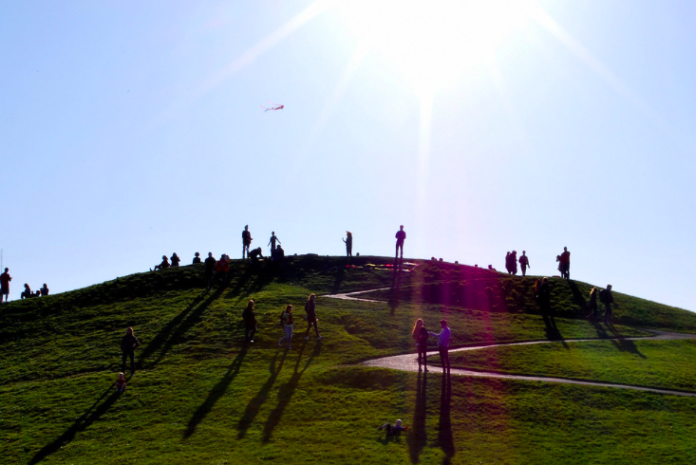
We are only three months into 2022, and yet the year has already proven to be a groundbreaking one for The Urbanist. Last fall, we set record highs for readership during the month of October, buoyed by our thorough coverage of the Northgate Link light rail expansion. We hoped to replicate those numbers at some point in 2022, but instead we found ourselves surpassing them immediately in January, which was followed by another surge in readership in February bringing us to new heights.
During the record-setting month of February, more than 181,000 readers visited our publication, according to Google Analytics.
As managing editor, even as I consider those numbers for what feels like the hundredth time, I remain surprised, honored, and inspired by them because they indicate people are interested in the topics that we cover and care about our organization’s values. Now for total transparency, we did have an article by reporter Ray Dubicki on why the Washington Commanders should move to Tacoma go viral in February, but lest you think we should abandon urban planning and policy for sports coverage, we had other very successful pieces run that month as well, such as an op-ed by All Aboard Washington about expanding Amtrak passenger rail statewide, an article I wrote about 734 homes proposed in the University Village Safeway redevelopment plan, and a cri de coeur from Senior Editor Stephen Fesler calling for Sound Transit to prioritize rider experience and “take a mulligan” on deep station designs for the West Seattle and Ballard Link light rail lines.
The redesign of our website has been a major contributing factor to our increase in readership. This work was undertaken by Stephen, who has been an integral member of The Urbanist’s team since the organization’s earliest days. Stephen did the redesign project as a volunteer, saving us thousands of dollars in expense, and producing a functional and attractive website that does justice to the quality of writing we publish. We are all so grateful to him for his hard work and commitment to The Urbanist’s success.
Our new website has made it easier than ever to read the articles we publish, but even with the new platform, we would not be attracting readership this high without people being genuinely interested in the topics we write about. While some may see us as a niche publication, the issues we address are anything but niche. Affordable housing, transit, walkable communities, urban policy centered on inclusivity and safety for all people, the climate crisis (and more) are subjects that lay at very center of the most important challenges faced by our society today. When it comes to these issues, the solutions that we embrace — or the mistakes that we make — matter, both for the people living today and for future generations. More and more people are reading The Urbanist because of the significance and relevance of what we write about.
That’s also why The Urbanist’s team wants to continue to expand and professionalize our publication. Because of the support of readers like you, we have been able to grow from an all volunteer team to one in which we have dedicated staff, a change that helps explain why we are reaching more people. I can attest firsthand to how moving from a longtime volunteer to paid staff member made all the difference in terms of how much time effort I could dedicate to The Urbanist. The success of fundraising drives like this one will allow us to provide more compensation to our writers, both within the organization and new hires and freelancers, so we can continue to achieve more with our work and also function more equitably as an organization.
It’s clear the issues we report on go further than Seattle city lines and that some of the most important growth and change is occurring in other areas of our metro area. To increase our coverage of Bellevue and the Eastside, we’ve enlisted Christopher Randels, an extremely knowledgeable Bellevue City Hall reporter, as a part-time staff reporter to help us with that effort. One of our newest writers (who also has excellent GIS mapping skills) Kevin Le has also been doing great work covering important topics in Tacoma, another Puget Sound city deserving focused coverage.
If you value what we publish and you want to have more high quality articles to read, now is the time to subscribe or donate to The Urbanist. The support we’ve received from readers, contributors, and volunteers has enable us to achieve a lot — but there is still also so much work that lays ahead. With expansion of Link light rail, our metro region has the chance to undergo a paradigm shift toward equity, sustainability, and increased quality of life for all residents. But doing so will take an informed, active citizenry pushing for change, and The Urbanist’s advocacy journalism will continue to play a crucial role as we power ahead.
Subscribe below. Uncheck the box if you’d like to make a one-time gift.
Thank you for your financial support and for being a reader of The Urbanist.
Natalie Bicknell Argerious (she/her) is a reporter and podcast host at The Urbanist. She previously served as managing editor. A passionate urban explorer since childhood, she loves learning how to make cities more inclusive, vibrant, and environmentally resilient. You can often find her wandering around Seattle's Central District and Capitol Hill with her dogs and cat. Email her at natalie [at] theurbanist [dot] org.


